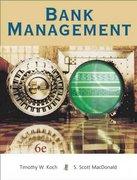


Experts I need help with the following attachments.
The assets of a large defined benefit pension scheme are currently invested in 50% equities and 50% bonds. The trustees of the scheme have recently reviewed their investment strategy. They propose to invest entirely in a mix of government and corporate bonds, disposing of all equities, because they believe it is the best way to reduce risk within the scheme. However, the sponsoring employer wants to flispose of the bonds and invest entirely in equities and riskier assets in order to increase the return on the assets held. (1) Discuss the key features of the trustees' and employer's investment strategies. [8] (1i) Discuss the likely impact on the scheme's funding position of each proposed investment strategy. [6]The value of an investment asset follows the equation A(t) = exp(B,), where B, follows standard Brownian motion. (i) State the five defining properties that apply to B, as a standard Brownian motion. [5] An actuarial student invests $1,000 in the asset at time (). (ii) Calculate the expected value of this investment at time 5 [2] (iii) Calculate the probability that the value of the student's investment is less than $10,000 at time 5. [2] [Total 9]Country B has a relatively young but thriving motor insurance market with the local regulator, the Country B Monitoring Authority (CBMA), playing a very active role. Recently, motor premium rates have been set via a motor insurance tariff imposed by the CBMA. This meant that the CBMA set the premium insurers could charge for a motor insurance policy for each of the standard risk profiles it set. The CBMA decided to remove the motor insurance tariff with effect from 1 January 2020. It now allows insurance companies in Country B to charge a premium of their choice for policies written with effect from 1 January 2020, while still prescribing the rating factors to use. Industry analysts predict that this change will lead to a price war that could reduce premiums charged to an unsustainably low level. Company C is a small-sized motor insurer in Country B with a roughly 6% market share of the motor insurance market. Company C has been in operation for the past 5 years. Company C's pricing actuary believes that the removal of the motor insurance tariff will lead to a rate reduction of up to 10% compared to premiums charged last year. Company C's reserving actuary is about to perform a reserving exercise as at 31 March 2020 I (i) Describe the factors that they should consider during the reserving exercise. [6] (1i) (a) Describe the reserving methods that could be used to estimate the Incurred But Not Reported (IBNR) claims for the current accident year. [3] ( b) Recommend. with reasons. the most appropriate reserving method. [1] Six months after the reserving exercise. Company C's market share has reduced from 6% to 2%. (iii) Suggest possible reasons for this reduction [20 [Total 12]












